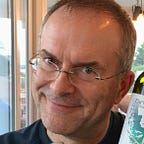New Zealand’s Treasure Box
Wellington’s innovative Te Papa Museum
Lambdon Quay, in the heart of Wellington, is an odd name for a street that is 250 meters from the water’s edge. A quay is a dock area. It’s supposed to be on the shoreline. But in 1855 an massive earthquake uplifted the land beneath New Zealand’s new capital city by 1.5 meters and left the quay high and dry. The newly emerged land immediately became prime real estate, and once they got the idea, city planners and developers carried on, reclaiming more and more land in the susequent century by infilling the shallows.
Right on water’s edge today, built on newly reclaimed land, is the Museum of New Zealand Te Papa Tongarewa. Te Papa means “Treasure Box” in the native Māori tongue. It’s not just the land beneath the museum that has been reclaimed; the art, the history, and the narrative have also been reclaimed. Previously, this offical custodian of New Zealand’s past was known as the Colonial Museum. But Te Papa is something new and unique, at least in my experience: A de-colonizing museum.
In countries with a colonial past, museums usually tell the nation’s history from the perspective of the dominant culture as “we”…
